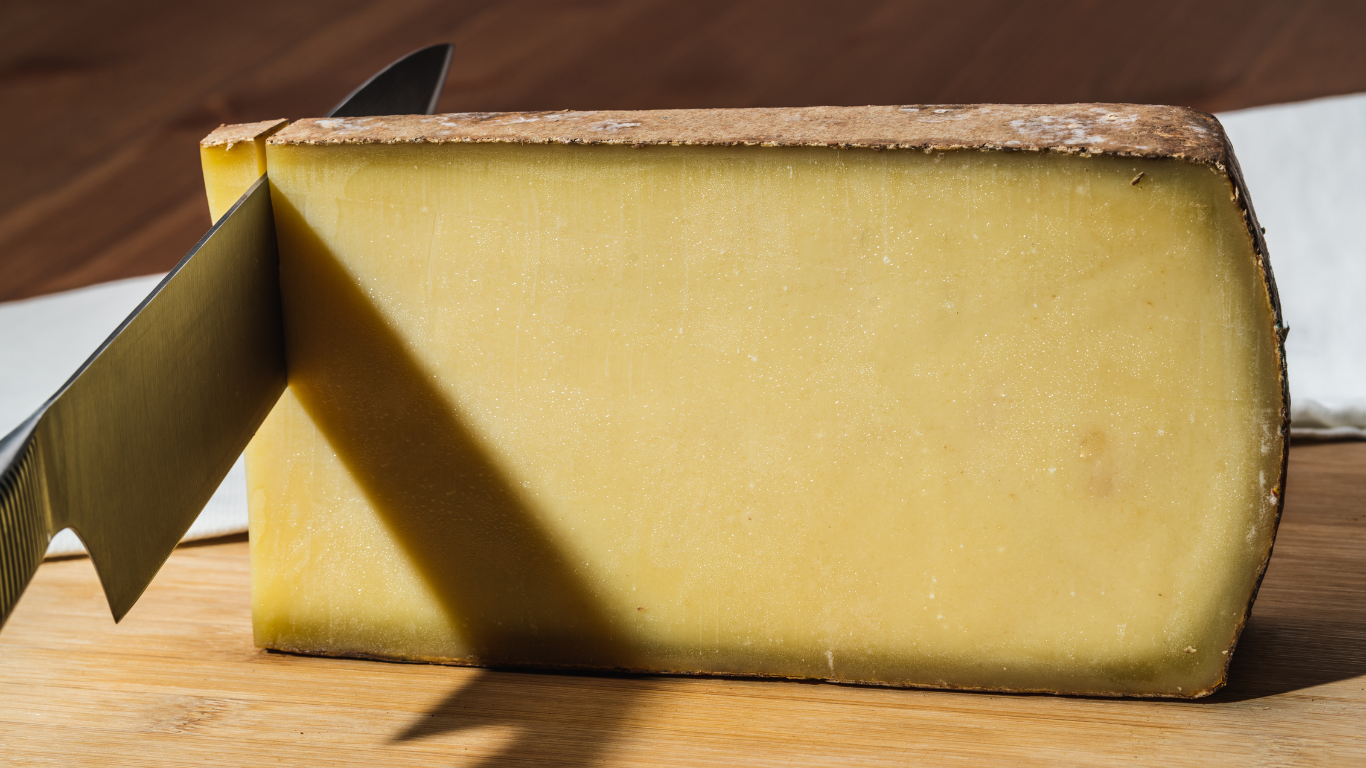Cheese lovers, rejoice! There is more to cheese than meets the eye. Cheese rinds are not only edible, but delicious. Well, most of them are. In this blog post, we will explore the different types of cheese rinds and which ones you can eat with confidence.
What are cheese rinds?
Cheese rinds are the outer layer of cheese that forms during the aging process. They protect the cheese from harmful bacteria, mold, and oxygen, and also contribute to the flavor, texture, and aroma of the cheese. Cheese rinds can be natural or artificial, depending on how the cheesemaker treats them. Some rinds are washed, rubbed, or brushed with salt, brine, wine, beer, herbs, or other ingredients. Some rinds are inoculated with specific cultures of mold or yeast. And some rinds are coated with wax, cloth, or leaves to seal the cheese.
Are cheese rinds edible?
In a word: yes. Cheese rinds are food safe. However, only some are meant to be eaten. You should feel free to enjoy flavored rinds, washed rinds, and bloomy rinds as part of your cheese eating experience. But you should avoid wax coatings, cloth, and leaves, as they are inedible and unappetizing. Here is a closer look at the different types of cheese rinds and which ones Cheesemonger Hook recommends eating (and which to pass on):
FLAVORED RINDS
These are rinds that have been infused with herbs, spices, fruits, nuts, or other ingredients to add flavor and aroma to the cheese. Examples of flavored rinds include Testun al Baralo, Tomme de Fontenay, and Truffle Pecorino. You can eat these rinds as they are, or use them to enhance your dishes. For instance, you can grate some truffle pecorino rind over your roasted vegetables, or melt some Testun al Baralo rind into your cheese sauce.
WASHED RINDS
These are rinds that have been bathed in saltwater, alcohol, or other liquids during the aging process. This creates a moist and sticky rind that is often orange or reddish in color. Washed rinds are known for their strong and pungent smell, but also for their rich and complex flavor. Examples of washed rinds include Taleggio, Époisses, and Brick. You can eat these rinds if you like their intensity, or trim them off if you prefer a milder taste.
BLOOMY RINDS
These are rinds that have been inoculated with a white mold called Penicillium candidum, which forms a soft and fuzzy layer on the surface of the cheese. Bloomy rinds are usually creamy and buttery in texture, and mild and earthy in flavor. Examples of bloomy rinds include Brie, Camembert, and Chabichou. You can eat these rinds as they are, or remove them if you find them too chalky or bitter. Some bloomy rind cheeses are wrapped with a piece of spruce bark, which adds a woody and resinous flavor to the cheese. You should peel off the top rind of these cheeses and dip your bread into the gooey center.
NATURAL RINDS
These are rinds that have been left to develop naturally, without any intervention from the cheesemaker. Natural rinds are usually hard and dry, and vary in color from yellow to brown. Natural rinds can have a nutty, fruity, or caramelized flavor, depending on the type of cheese. Examples of natural rinds include Parmesan, Cheddar, and Gruyère. You can eat these rinds if you like their crunch and flavor, or grate them into your soups, salads, or pasta dishes. You can also use them to make cheese broth or cheese crackers.
BLUE RINDS
These are rinds that have been pierced with needles to allow air to enter the cheese and create blue veins of mold. Blue rinds are usually crumbly and moist, and have a sharp and tangy flavor. Examples of blue rinds include Gorgonzola, Roquefort, and Stilton. You can eat these rinds if you enjoy their bite, or cut them off if you find them too strong or bitter.
How to eat cheese rinds
The best way to eat cheese rinds is to taste them along with the cheese, and see how they balance each other. You can also pair them with different foods and drinks, such as bread, crackers, fruits, nuts, honey, wine, beer, or cider. Experiment with different combinations and discover new flavors and sensations. It is always a personal choice, eat what you like and don't eat the ones you don't like. Bon appétit! 🧀




Leave a comment
This site is protected by hCaptcha and the hCaptcha Privacy Policy and Terms of Service apply.